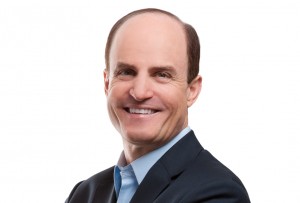(P) Devising a Service-Recovery Strategy

 Take a lesson from the movies and give your ailing customer-service system a comeback worthy of Hollywood
Take a lesson from the movies and give your ailing customer-service system a comeback worthy of Hollywood
By Ron Kaufman
Hollywood loves the underdog. It’s a formula for box-office riches: the quirky guy who gets the girl, the ragtag team that wins the championship, or the unexpected superhero who saves the day. But what about business? Is there a magic formula for a brilliant comeback?
Whether you think you need a comeback or not, there is a formula that can uplift you and your organization in a heartbeat. It all starts in a place that will surprise you: in your worst mistakes. Yes, the magic formula is found when your company is the underdog in the eyes of your customer, when it needs a service-recovery strategy.
Want proof?
GREETING COMPLAINTS WITH IRE
Consider Xerox Emirates, a Dubai-based subsidiary of the global document-management company—and my firm’s client since 2006. One of the company’s enduring values is to succeed through satisfied customers. Originally, Xerox (XRX) implemented a service initiative called the Customer Care Management System, a means for tracking customer complaints about service. The thinking behind the system was admittedly flawed. "It was used reluctantly," says Andrew Hurt, general manager of Xerox Emirates. "Employees viewed the system as a tool for leadership to place blame on someone for poor service performance. In fact many, feared logging complaints into the system because it would lead to personal recrimination."
Think about that for a second. Would you log a complaint if it got you in trouble?
So workers were hiding complaints, quashing the voices of customers who had problems and needed to be heard. And the performance of the organization was sinking.
How would this play out in a great Hollywood comeback film? That’s easy, right? In a movie, Team Xerox would begin to use its shortcomings as an avenue of strength. In fact, the biggest shortcoming would become the distinctive move that defeats the foe, wins the game, or makes the girl choose the guy.
"We killed the old system and launched a program called Bounce as our service-recovery tool," says Hurt. "Instead of shame and blame, we presented shortcomings as an opportunity to elevate service. Like a ball dropping, we could ignore it or we can make it bounce—and raise the level of service higher than it had been to start. Not only could we learn from mistakes and fix them, but we realized that complaints were a great opportunity to surpass expectations because we were being told the specifics of our clients’ frustrations."
YOUR MISSION: FIND, SOLVE COMPLAINTS
Hurt says that once the team members at Xerox realized that they had an opportunity to excel and gain management support to take action, they began actively searching for problem areas. Instantly, the term "personal responsibility" took on a new meaning. Accolades were given to those people who discovered areas of improvement or created innovative ways to recover favor with upset customers. Customer-satisfaction scores skyrocketed. It all happened because Xerox embraced and leveraged complaints as an area of great potential for gain.
Here’s the most interesting part of this story: Because managers now focus first on the recovery outcome instead of blaming the source of the problem, employees stopped being afraid when things go wrong. In fact, managers now praise team members who bring dissatisfied customers to their attention. Rather than ignore customer complaints or cover them up, employees actively see them as opportunities to excel. While the number of complaints logged into the Bounce system has increased 200%, so have the "satisfaction with service recovery" scores.
How do you bounce your way to a brilliant comeback?
1. Analyze the cost of recovery. Many companies will dump oodles of money into advertising and promotion to acquire new customers, yet they resist allocating much of the budget to service recovery. Do your cost analysis. Recovery is not only less expensive than acquisition. It also creates delighted clients that spend more and become your evangelists.
2. Be aggressively proactive. Sure, it doesn’t feel good to spotlight your flaws. But if you view your service-recovery strategy as a disease-prevention formula, you’ll catch most problem areas before you get sick.
3. Go for gold. We love the great comeback movies because the underdog comes from behind to surpass everyone’s expectations. Your service-recovery strategy should strive for the same.
Ready to uplift your organization? Cue the anthem music. Envision what it takes to surprise, delight, and transform even the most dissatisfied customer. It’s a formula that works in the box office and it’s guaranteed to work in your company.
Speaker, consultant, author of 15 best sellers, editorialist and educator, Ron is the world's leading authority and the most fervent motivator for uplifting customer service culture! Ron will present Service Leadership WorkshopTM in October the 31st 2012, in Bucharest - a powerful program for Romanian companies looking to rise above the current economy to become Competitive Leaders. Register on www.ronKaufman.ro or find out more on www.ronkaufman.com.
This article originally appeared on Bloomberg Businessweek.
Renania recommends Service Leadership WorkshopTM as the Event Partner.

(P- this article is an advertorial)















